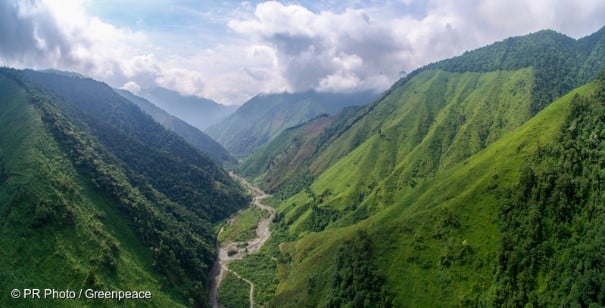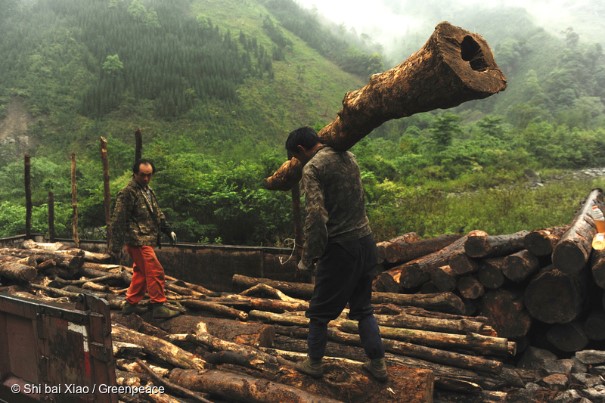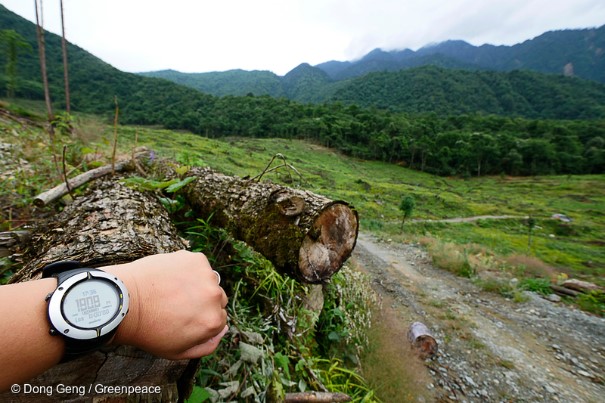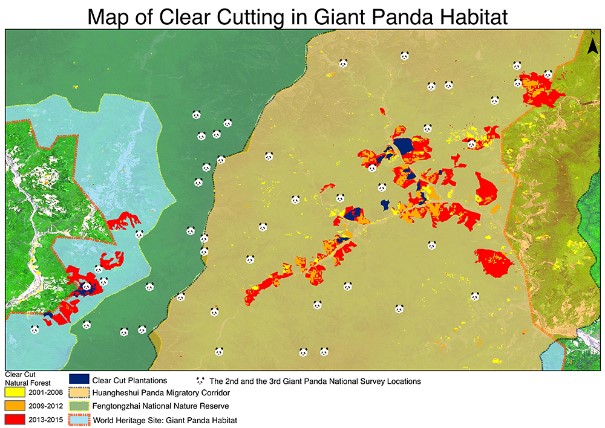
This is one of the most botanically rich areas on the planet outside the tropical rainforests, home to over 5,000 different flora, a diverse and colourful area bursting with wildlife, some of which is unique to this part of the world.
However, due to illegal logging, this ‘sanctuary’ is becoming fragmented and putting China’s pandas and the rest of the stunning wildlife that lives here in danger.
Over two years, Greenpeace East Asia has been investigating deforestation in the heart of the Sichuan Giant Panda Sanctuaries using spatial analysis, remote sensing interpretation and field surveys. We discovered that since 2009, a shocking 3,200 acres of natural forest have been clear cut to make way for plantations that can be cut down for profitable timber.
Forest reconstruction
Despite laws that expressly forbid the clear cutting of any natural forest in Sichuan, unclear regulations are allowing precious natural forests to be clear cut, in the name of ‘forest reconstruction’.
This nationwide policy aims to make ‘low-functioning’ commercial forests more profitable. However, loopholes in the regulations allow natural forest with enormous conservation value to be classified as ‘low-functioning’ forest. This means that pristine forests that are home to so much precious wildlife are being razed to the ground, with impunity.
Authorities recognized this and enacted a further ban on clear cutting natural forests in 2012- but it wasn’t effective.
Our most recent expedition in June this year revealed that the destruction hasn’t stopped
Habitat destruction is one of the biggest threats to the giant panda’s survival. Giant pandas need a mature forest habitat that is rich in food resources to survive.
Giant pandas also need a large habitat in order to migrate and reproduce. Greenpeace analysis has shown that deforestation is happening in the heart of the Huangshuihe panda migratory corridor. Migratory corridors like this are essential for ensuring healthy breeding patterns for panda bears.
The plantations that are replacing the clear cut forests can’t even come close to replicating the delicate, balanced, ecosystem that is essential for pandas to thrive in.
It’s not just Sichuan: the forest reconstruction project is happening all across China. Greenpeace previously discovered the same thing happening in Yunnan and Zhejiang Provinces. If this loophole isn’t closed, a third of China’s natural forests will remain exposed even after the nationwide expansion of the Natural Forest Protection Programme in 2017.
Pandas are a symbol of China, as iconic as the Great Wall or the Forbidden City. China places much pride in the Panda, but far from enough is being done to protect their habitat. Closing the loophole that is permitting the destruction of their home would be one small step with enormous benefits for the Giant Panda and the numerous other precious wildlife who share the habitat of the Chinese forests.
Wu Hao is a Forests Campaginer at Greenpeace East Asia








